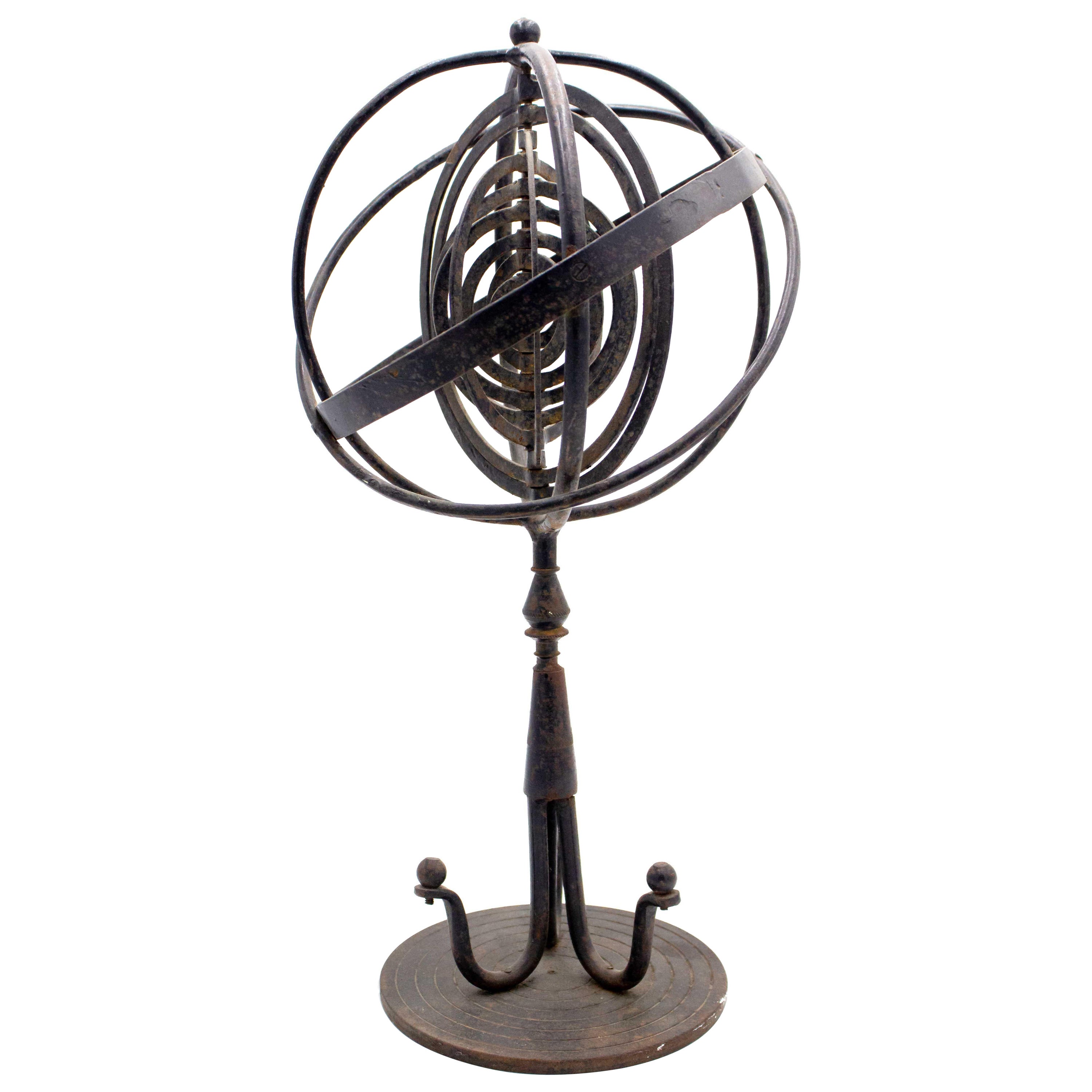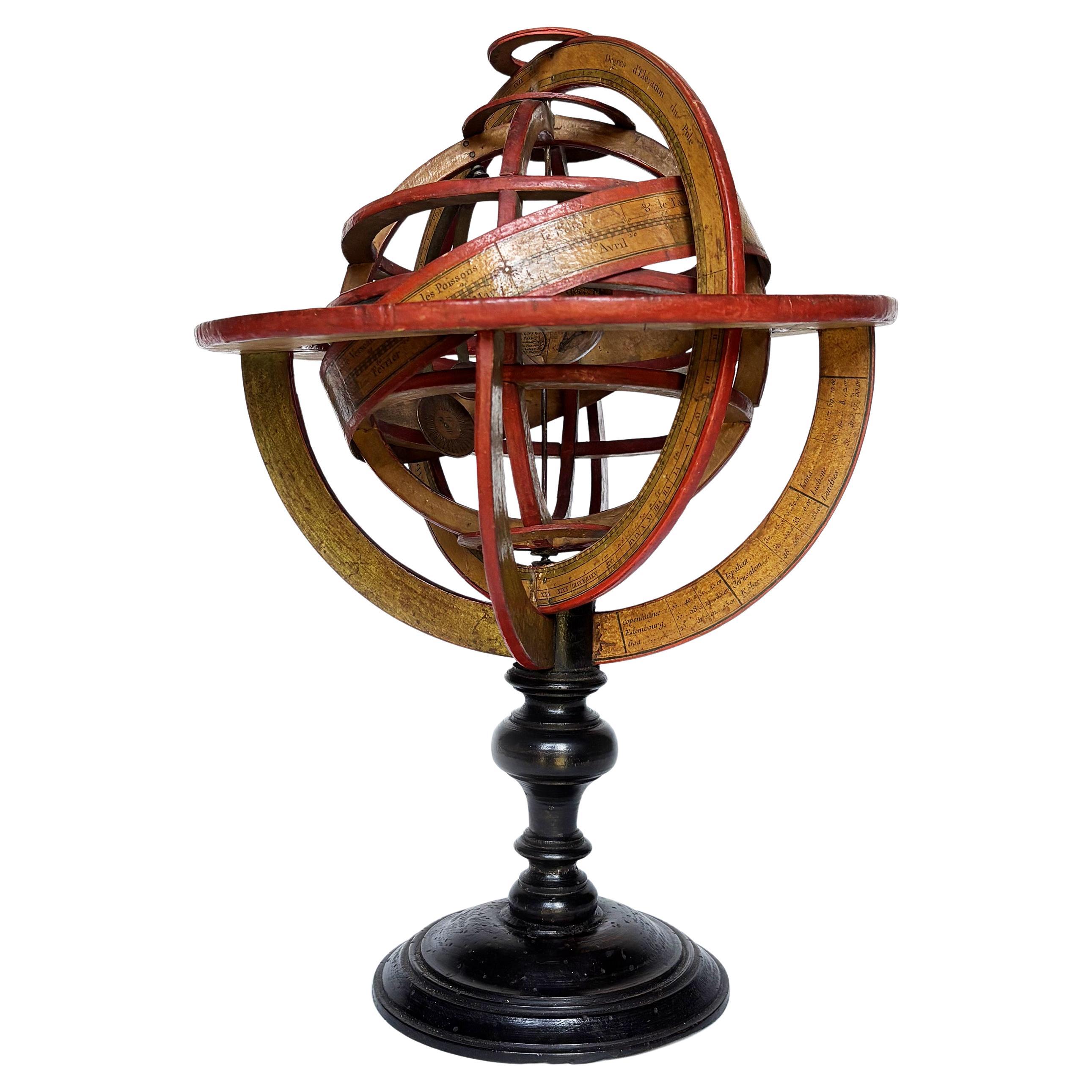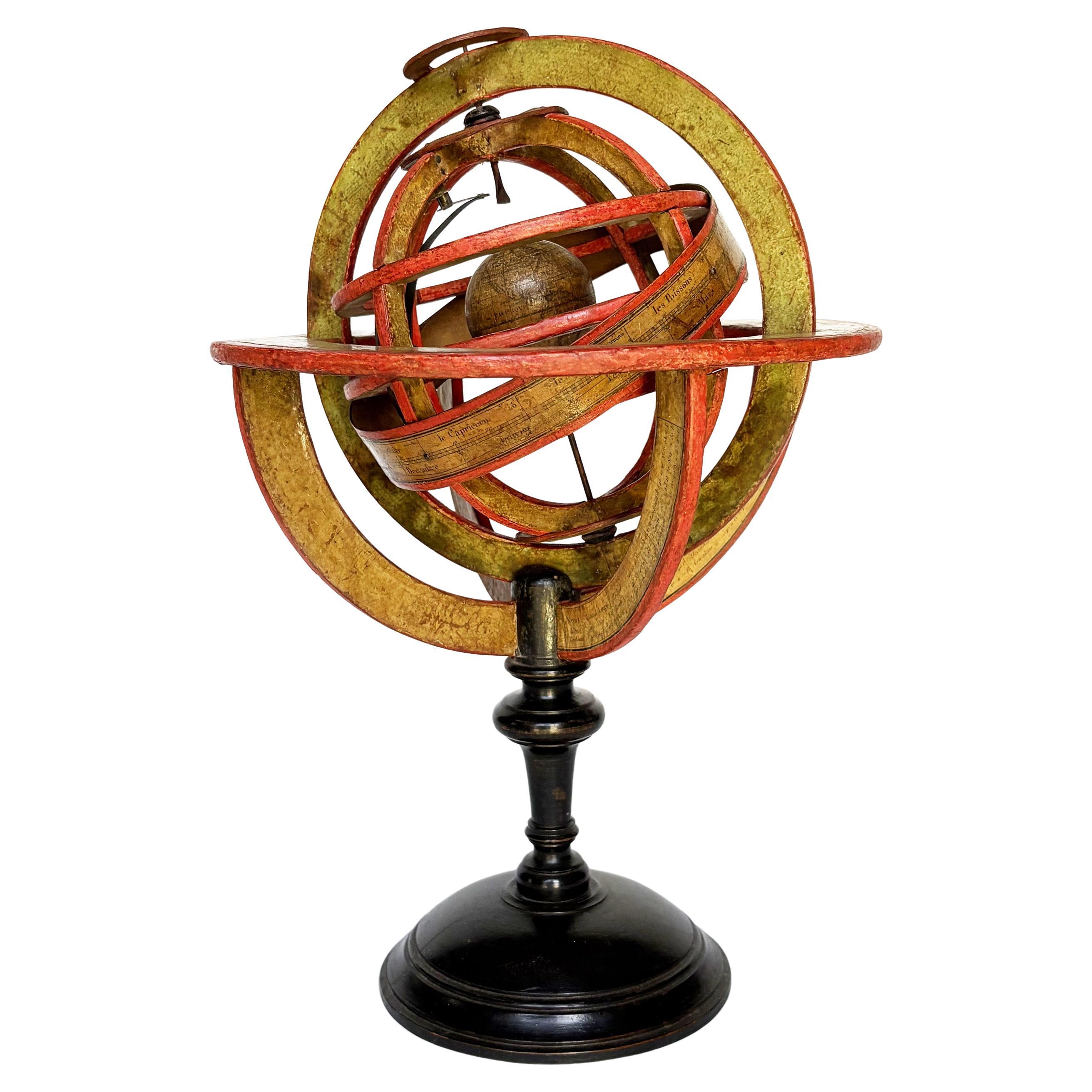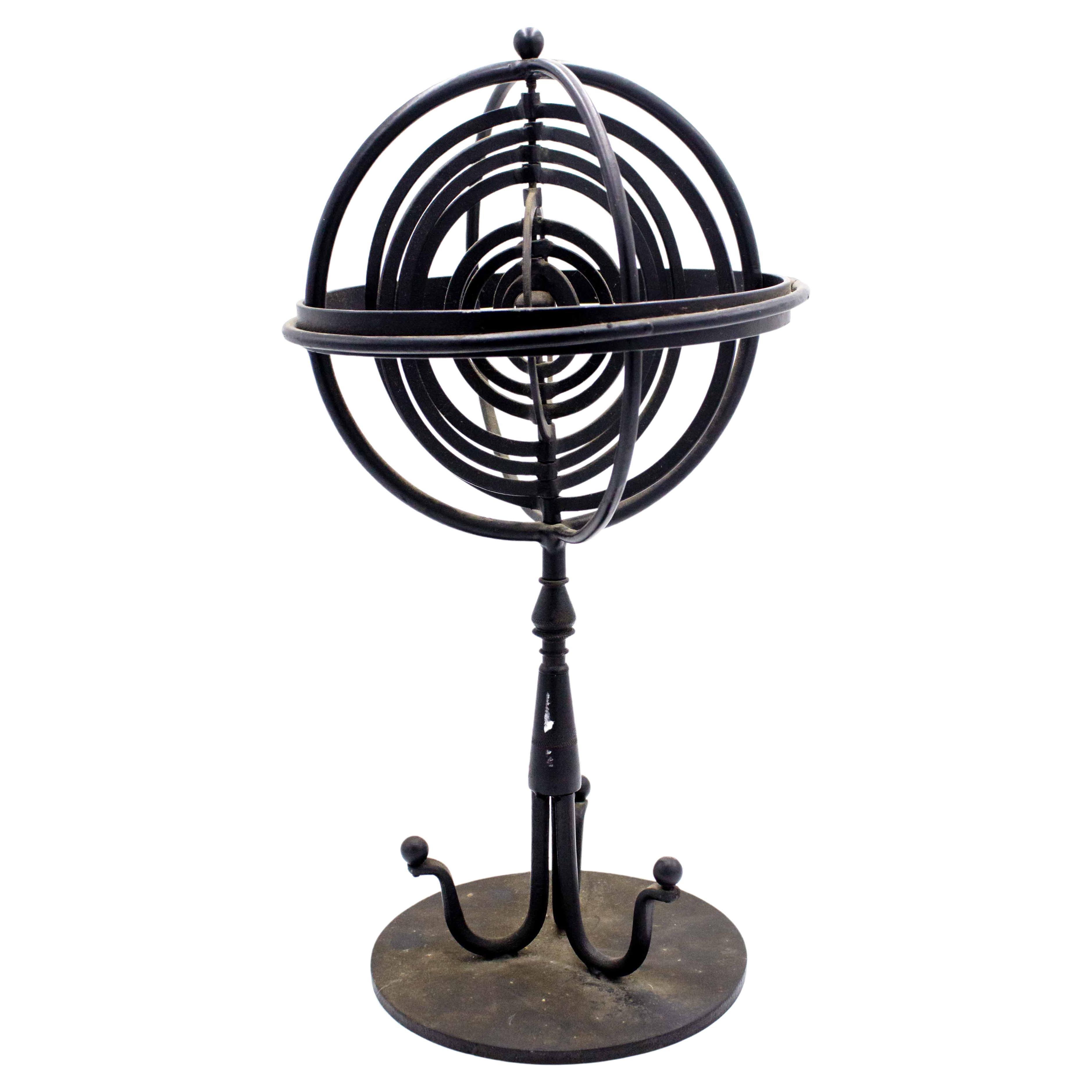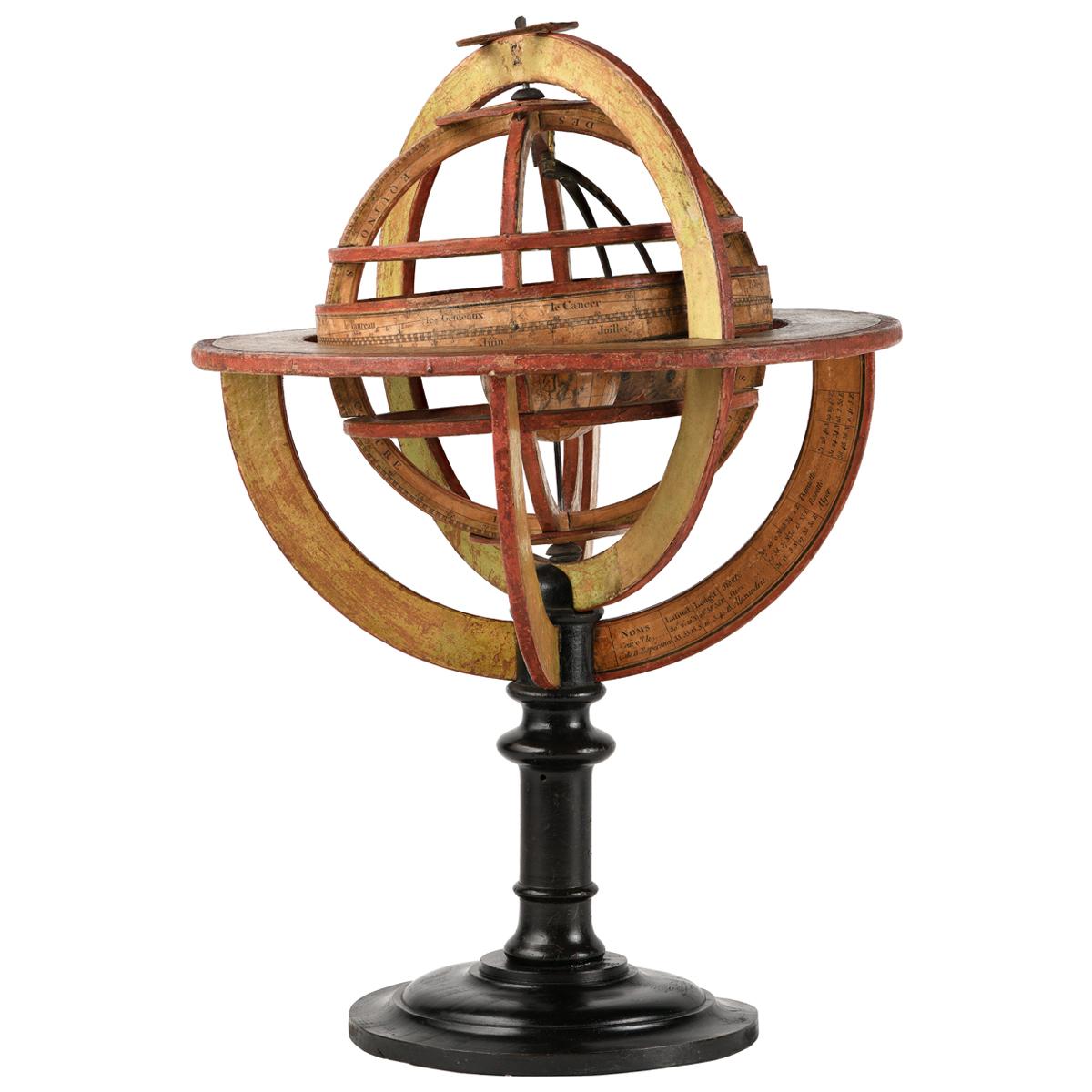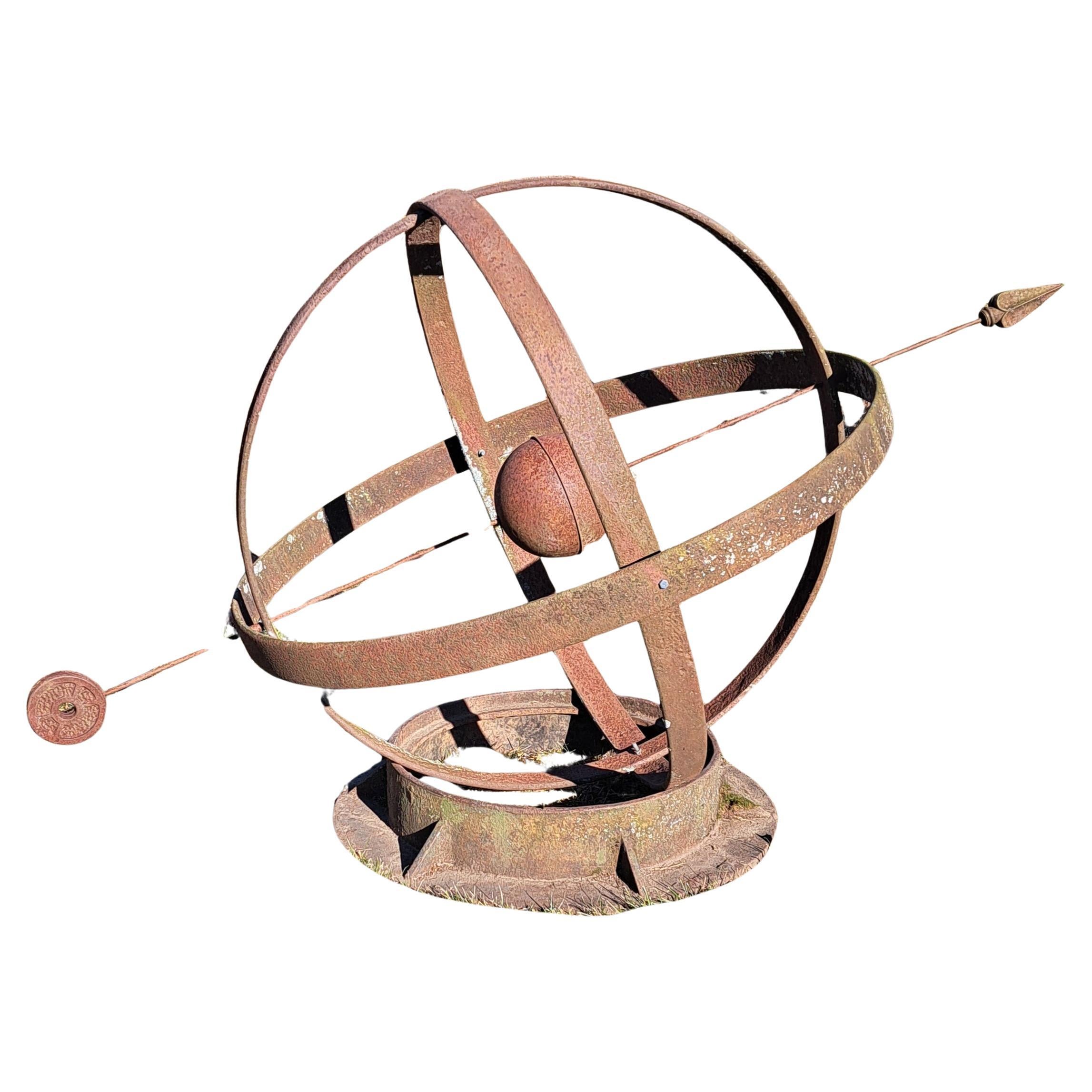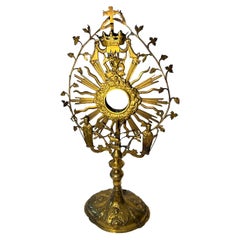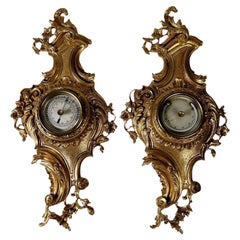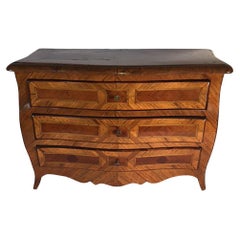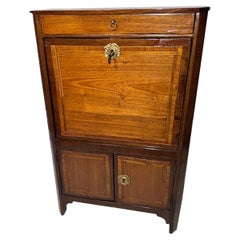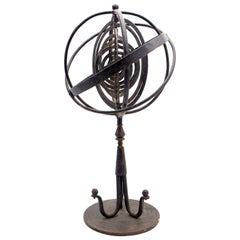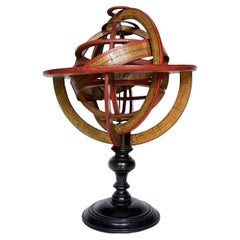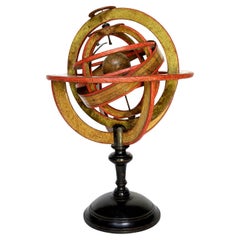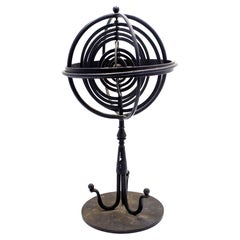Items Similar to French Hand Carved Wooden Armillary
Want more images or videos?
Request additional images or videos from the seller
1 of 17
French Hand Carved Wooden Armillary
$2,750
£2,087.75
€2,387.94
CA$3,842.15
A$4,273.31
CHF 2,231.39
MX$52,001.61
NOK 28,498.24
SEK 26,726.32
DKK 17,822.14
Shipping
Retrieving quote...The 1stDibs Promise:
Authenticity Guarantee,
Money-Back Guarantee,
24-Hour Cancellation
About the Item
A rare and visually captivating French hand carved armillary sphere, dating to around 1900. Crafted entirely of wood and meticulously hand painted, this antique scientific model showcases celestial precision with an artisan's touch.
Elegant Latin inscriptions, zodiac signs, and planetary orbits are thoughtfully rendered, all supported by a sculptural red base with a black octagonal foot. The craftsmanship reflects the artistry of turn of the century French design both educational and decorative.
There is minor damage in two areas consistent with age, but it remains structurally sound and visually striking. A collector’s piece with old world charm and astronomical significance.
- Dimensions:Height: 13 in (33.02 cm)Width: 8 in (20.32 cm)Depth: 8 in (20.32 cm)
- Materials and Techniques:
- Place of Origin:
- Period:1900-1909
- Date of Manufacture:Circa 1900s
- Condition:Wear consistent with age and use. Minor losses. There is minor damage in two areas consistent with age, but it remains structurally sound.
- Seller Location:Dallas, TX
- Reference Number:1stDibs: LU6652245368812
About the Seller
No Reviews Yet
Vetted Professional Seller
Every seller passes strict standards for authenticity and reliability
1stDibs seller since 2022
16 sales on 1stDibs
- ShippingRetrieving quote...Shipping from: Dallas, TX
- Return Policy
Authenticity Guarantee
In the unlikely event there’s an issue with an item’s authenticity, contact us within 1 year for a full refund. DetailsMoney-Back Guarantee
If your item is not as described, is damaged in transit, or does not arrive, contact us within 7 days for a full refund. Details24-Hour Cancellation
You have a 24-hour grace period in which to reconsider your purchase, with no questions asked.Vetted Professional Sellers
Our world-class sellers must adhere to strict standards for service and quality, maintaining the integrity of our listings.Price-Match Guarantee
If you find that a seller listed the same item for a lower price elsewhere, we’ll match it.Trusted Global Delivery
Our best-in-class carrier network provides specialized shipping options worldwide, including custom delivery.More From This Seller
View AllLate 18th Century Gilded Italian Monstrance
Located in Dallas, TX
Monstrance gilded with bishops, bird, lamb and cross. Gilded base with angels is 10” x 7.5”. Circa 1780-1810, Italian.
Category
Antique 1780s Italian Religious Items
Materials
Metal
French Miniature Bronze Doré Centigrade Thermometer and Barometer
Located in Dallas, TX
A finely crafted pair of miniature scientific instruments, featuring a centigrade thermometer and barometer housed in ornate bronze doré casings. French, circa 1890, these pieces ref...
Category
Antique 1890s French Scientific Instruments
Materials
Bronze
18th Century Italian Minature Table Top Exotic Woods Chest
Located in Dallas, TX
An Italian miniature table top commode chest with exotic inlaid woods.
Circa 1780-1800. Very fine French polish.
Category
Antique 1780s Italian Models and Miniatures
Materials
Wood
French Miniature Louis Lvi Style Secretary
Located in Dallas, TX
French miniature Louis LVI style secretary with fall front opening and bronze doré
Mounts. Circa 1840.
Category
Antique 1840s French Models and Miniatures
Materials
Wood
17th Century French Bagard Casket Box with Provenance
Located in Dallas, TX
An extraordinary carved wooden casket by César Bagard, ca. 1700–1720, created in the Lorraine region of France and attributed to the famed sculptor of Louis XIV. Rich with historical...
Category
Antique 1710s European Decorative Boxes
Materials
Wood
Italian 18th Century Style Secretary
Located in Dallas, TX
Ebonized and burl walnut 18th century style secretary with panel doors that are mirrored inside and out so can display open or closed. The upper cabinet has been lined with fabric wh...
Category
Vintage 1980s Italian Secretaires
Materials
Walnut
You May Also Like
Italian Mid-Century Wrought Iron Armillary
Located in Queens, NY
Italian Mid-Century Modern wrought iron armillary globe with a center sun surrounded by 9 movable planetary rings on a platform base.
Category
20th Century Italian Mid-Century Modern Scientific Instruments
Materials
Iron, Wrought Iron
Ptolemaic Armillary Sphere, Charles-François Delamarche, Paris, ante 1798
By Charles Francois Delamarche
Located in Milano, IT
Ptolemaic armillary sphere
Charles-François Delamarche
Paris, ante 1798
Wood and papier-mâché
covered with printed and partly hand-colored paper
It measures 15.55 in in height x Ø 10...
Category
Antique 1790s French Other Scientific Instruments
Materials
Wood, Paper
Ptolemaic Armillary Sphere, Charles-François Delamarche, Paris, ante 1798
By Charles Francois Delamarche
Located in Milano, IT
Ptolemaic armillary sphere
Charles-François Delamarche
Paris, ante 1798
Wood and papier-mâché
covered with printed and partly hand-colored paper
It measures 16.37 in in height x Ø 10.94 in (41.60 cm - Ø 27.80 cm)
It weights 2.33 lb (1,058 g)
State of conservation: consistent with its age and use, the paper shows some signs of use, stains and abrasions.
The sphere is Ptolemaic, with the Earth placed at its center, surrounded by the Moon and the Sun mounted on two metal arms.
The sphere is composed of six horizontal and two vertical rings (armillae), each bearing graduations and its own name.
The first horizontal ring is illegible. The others, in descending order are: North Pole, Tropic of Cancer, Equator, Tropic of Capricorn, South Pole.
The vertical rings consist of two double meridians.
The sphere is then connected to the large meridian by two pins, a vertical ring inserted perpendicularly into the circle of the Horizon, in turn supported by four semicircles connected to the turned and black-stained wooden base.
Each element is covered with printed paper. It contains various pieces of information: latitudes, length of days, names and zodiac symbols, calendar, wind directions, etc.
The vertical circles mention the latitudes and longitudes of different cities: Rome, Bordeaux, Madrid, Boston, Batavia (Jakarta), Acapulco, etc.
Even the small terrestrial globe is covered with printed paper: continents and oceans appear with numerous geographical markings indicating the most recent explorations.
In the Pacific Ocean, west of South America bears the following inscription:
GLOBE
TERRESTRIAL
à Paris
chez Delamarche Géog
Rue du Foin Jacques
Au Collège de
M.e Gervais
The North American coasts are well delineated and California appears correctly as a peninsula - reports from Spanish explorers in the region had given rise to confusion as to whether it was connected to the mainland or not. The geographical nature of California was confirmed after the explorations of Juan Bautista de Anza (1774-1776).
Alaska is not described and is only partially traced; it would become part of the United States in 1867.
Various Pacific islands are indicated.
Australia (the name definitely used from 1824) is called "Nouvelle Hollande."
Tasmania is still represented as a peninsula and this is an important detail for the dating of our armillary sphere.
The island is separated from Australia by Bass Strait, which was crossed by Matthew Flinders for the first time in 1798, showing that it was not a peninsula. Delamarche certainly would not have waited a long time to update such an important geographical datum: presumably he did so shortly after receiving the news.
Charles-François Delamarche (1740-1817) founded his laboratory around 1770 and, in a few years, he became the most famous French cartographer and globe maker between the 18th and 19th centuries. After having acquired the laboratory of the late Didier Robert de Vaugondy (1723-1786; himself a renowned cartographer who continued the family business founded by his grandfather Nicolas Sanson in the seventeenth century) and after having purchased, between 1788 and around 1800, the businesses of Jean-Baptiste Fortin (1750-1831) and Jean Lattré (around 1750-1800), he began to call himself "Successeur de MM. Sanson and Robert de Vaugondi, Géographes du Roi and de M. Fortin, Ingénieur-mécanicien du Roi pour les globes et les sphères."
Thus, at the end of the eighteenth century, Delamarche possessed the warehouse stocks, as well as the manufacturing skills of the globes of his main rivals in Paris.
In addition to this aggressive acquisition policy, the key to its success also lay in the combination of high-quality cartography combined with extremely attractive globes and armillary spheres; and, of course, its famous red paint finishing touch.
His laboratory was located on Rue de Foin St Jacques "au Collège Me. (or "Mtre") Gervais" in the Latin Quarter of Paris until around 1805, when he moved to rue du Jardinet No. 13.
On the death of Charles-François in 1817, the reins of the company passed to his son Félix (1779-1835), who continued to publish, often in collaboration with the engraver Charles Dien, Sr. In 1835 the company first moved to rue du Jardinet No. 12 and a little later to rue du Battoir No. 7.
Bibliography:
Dekker, Elly, et al. Globes at Greenwich...
Category
Antique 1790s French Other Scientific Instruments
Materials
Wood, Paper
Italian Renaissance Style Iron Armillary
Located in Queens, NY
Italian Renaissance style black iron armillary globe on a round base.
Category
20th Century Renaissance Nautical Objects
Materials
Iron, Wrought Iron
Ptolemaic Armillary Sphere Charles-François Delamarche Paris, 1805-1810 Circa
By Charles Francois Delamarche
Located in Milano, IT
Charles-François Delamarche
Ptolemaic armillary sphere
Paris, circa 1805-1810
Wood and papier-mâché
covered with printed and partly hand-coloured paper
It measures 15.74” in height, ...
Category
Antique Early 1800s French Empire Scientific Instruments
Materials
Paper, Wood
Large Garden Armillary
Located in Newtown, CT
Large garden Armillary that sits on the ground. Would look great with plantings around it. The length of the arrow is 81.5", the sphere is 50" and its 47' high. Great statement piece
Category
Early 2000s American Industrial Sundials
Materials
Iron
$3,730
More Ways To Browse
Antique Sphere
Wooden Sphere
Celestial Sphere
Antique Armillary Sphere
Antique Field Camera
Antique Lorgnette Folding Glasses
Antique Pomanders
Apothecary Balance
Barograph And Barometer
Black Forest Thermometer
English Binoculars
French Brass Compass
Italian Barometer
Plumb Bob
Weather Station Brass
Antique Stick Barometers
Antique Wooden Spools
Mahogany Banjo Barometer
